
Insider Interview: Bounty with Upstander Project
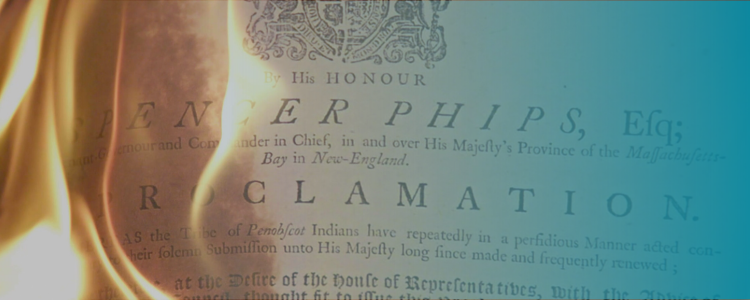
Written by Lucy Pollock, Exhibits Manager
Revolutionary Spaces recently sat down with the Upstander Project team, including co-presidents Adam Mazo and Mishy Lesser, to discuss their film Bounty, which follows Penobscot families as they read a scalp bounty that was signed in the Old State House’s Council Chamber. Bounty is currently screening daily in the Old State House.
What is Bounty? Why is it set in the Old State House?
Adam Mazo: Bounty is a filmic testimony of the immeasurable resistance and survivance of Indigenous Peoples. The film is the cornerstone of a media ecosystem which includes a nine-minute documentary film, several educational videos, a four-lesson comprehensive Teacher’s Guide, digital timeline, and the Bounty Rewards Archive. In the film, Penobscot parents and children resist erasure and commemorate survival by reading and reacting to one of the dozens of government-issued bounty proclamations that motivated colonial settlers to hunt, scalp, and murder Indigenous people.
Mishy Lesser: Bounty flips the colonial narrative on its head. Some revolutionary soldiers had participated in so-called scalping ‘expeditions,’ which raises the question: Whose freedom, for what purpose, and at what cost? The teaching of history—whether in classrooms, museums, or at historical sites—must include the truth, everyone’s truth. Bounty and its educator resources step into that space with bold and unapologetic truth-telling. The Old State House, known as Town House in the colonial era, was the seat of government where legislators and the governor’s council met to pass laws, including scalp laws that terrorized Native children, women, and men. We all deserve the right to learn the full truth of what happened on Boston’s Freedom Trail—including that at least 19 scalp bounty laws were signed in Boston’s Old State House where Bounty was filmed. The “Phips Proclamation” featured in Bounty was one of at least 80 government-issued scalp bounties targeting Native Peoples across the Dawnland (now known as New England and Atlantic Canada).
What is the difference between showing this film in a non-historic environment versus in the Old State House, where the bounties were issued?
Mishy Lesser: Many people report a chill when watching Bounty in the Old State House because it reinforces the cruelty of the fact that a group of white men sat around an elegant wooden table making decisions that determined the fate of people hundreds of miles away.
Why is it important for the public to see this film?
Carmella Bear: Indigenous people have been neglected. Our existences have been threatened for so many years. The more that people learn about our history and how this government had tried to just get rid of us completely, I feel like the more people know about that, the better.
Kaden Neptune Adams: A lot of our history has been whitewashed. You can have your opinions on anyone but please acknowledge that these horrible, horrible things have been done instead of just pushing them away.
Maulian Bryant: I think it’s so important to see Penobscot people as modern day people with hopes and goals and things we are healing from, things we are working towards. It can be advocating for causes, it can be being aware of issues, it can be elevating voices of more oppressed or marginalized people. It can be as simple as changing the way you talk to your children about tribal people. And seeing this movie, you see that we are still here and we are still telling our stories. Possibly even thinking about things like sports mascots that use Indian names and imagery and some of the stereotyping that goes along with that and how that stereotyping is really a form of dehumanization. And it goes back to kind of some of this original dehumanization, which were things like scalp proclamations. So, I would love for people to have an awakening about Indigenous people in America, I would love for people to not feel defensive or blamed or upset about this project. I would love for them to feel like they are just learning the whole history of America. And even though none of us were around back then, we can all think about the real truth of things and how that helps us interact with each other today.
Dawn Neptune Adams: When the Maine Wabanaki Truth and Reconciliation Commission happened, a few years later they released a report. And in that report were some recommendations for moving forward. The first recommendation is, “Recognize Wabanaki sovereignty.” So when you hear Wabanaki people put out a call to stand in solidarity, we ask you to do that. We ask you to come and stand with us and that can be your way of paying reparations.
Mishy Lesser: The dehumanization of some human beings by others is the foundation upon which war crimes, ethnic cleansing, and genocide are committed. These themes are part of the human story and very much alive today. The public needs to understand the relationship between dehumanizing behaviors such as name-calling and stereotyping, and other forms of violence.
What has been the most rewarding or challenging part of this films’ production, release, or reception?
Maulian Bryant: In the long run my kids feel like they’ve done a lot for our people… When I am advocating for federal laws to apply, it helps so much to have been in that space [Old State House]—to feel those things more deeply and process that history in real time…The voice of the project is so clearly ‘us’…. It conveys this empowering sense of resilience and that Penobscot people, Indigenous people all over this country were not supposed to still be here. That there were very systematic attempts to exterminate our people in order to have our land taken. So the fact that we are still living here in our home, and we will grapple with this trauma and we will reflect on it and honor our ancestors, but we need to do that by being strong, proud Penobscot people. And this project was a way to reclaim some of that space…. I thought it would kind of hit me in a very sad way. And when we were actually in the Old State House doing it, I definitely felt the power of the moment, but I think it also felt like we survived as a people. And I think there was some real power in that.
Carmella Bear: Being there was definitely a kind of not only power, but just overall vibe in the room that just we’re still here, we’re strong. It was powerful.
Dawn Neptune Adams: The paper, all of a sudden felt slimy and I just wanted to get rid of it. But yeah, even just being in that room was making me feel sick. This feeling of revulsion that I get when I’m… Say standing in front of the legislature speaking and there are these white men staring down at me from the portraits on the wall. It’s obviously not a friendly place. It’s obviously a place where horrific things happened. Horrific things were decided upon. The feeling of empowerment didn’t come in that space when I asked for a lighter. It came from later on watching the film and watching that document go up in flames. I think we all felt horror about the subject matter we were talking about. But I also think that we all understood the importance of making sure that everybody saw it. It’s sort of like ripping the bandaid off of an old wound and letting it get some air for healing to occur.
What does Bounty mean to the fields of history and filmography? What does this film mean to you?
Maulian Bryant: As history is written by the winners, we’re either erased or our contributions can’t be found in the way history is written, or we are stereotyped, or it’s presented as these people were here, we conquered them, now they’re gone. So when Penobscots take ownership over our stories and we can say, yes, these things happened.
Dawn Neptune Adams: Nobody can tell our stories but us; It has to be in our own words and from our own perspective. And people can certainly amplify us, but the world view and the words are our own.
Adam Mazo: Bounty is a co-creation by a multicultural group of filmmakers from Upstander Project in Boston in collaboration with Penobscot families. We made a choice for five of us to direct this film, a shift from traditional hierarchical norms in filmmaking. It is one of the first films co-directed by Penobscot people to air on public television. We believe it is also historic for resurfacing of hidden history and reclaiming of space by Penobscot people showing that they are here and thriving in the very room where genocide was authorized, in the heart of Boston, in a failed attempt to exterminate them. While for some the trappings of the Old State House represent grandeur, civilization, and refinement, with Bounty we hope viewers will see that façade covers up a ruthless, violent, and insidious truth. This is a story that must be known, remembered, and memorialized alongside Boston’s better known narratives.
About the Interviewees
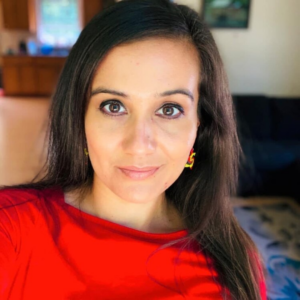
Maulian Bryant (Penobscot Nation tribal ambassador) (she/her) is co-director of and a participant in Bounty. She holds a BA in political science from the University of Maine. She is the co-chair of the state’s Permanent Commission on the Status of Racial, Indigenous and Maine Tribal Populations; co-chair of the Maine Climate Council’s Equity Subcommittee and member of the Maine Climate Council; Board President for the Wabanaki Alliance; and member of the Permanent Commission on the Status of Women.
Carmella Bear (Maulian Bryant’s child)
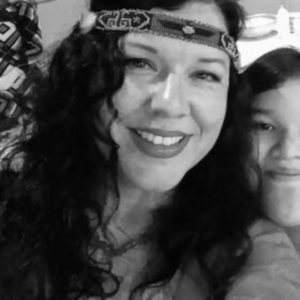
Dawn Neptune Adams (Penobscot Nation) (she/her) is a filmmaker and journalist with Sunlight Media Collective and co-director of and a participant in Bounty. Dawn is a Racial Justice Consultant to the Peace & Justice Center of Eastern Maine; a member of Racial Equity & Justice of Bangor, Maine; and a former Indigenous Peoples’ Policy Advisor for the Hunter/Elias 2020 Presidential campaign. Dawn has served as the Wabanaki Liaison to the Maine Independent Green Party since 2016 and was the Vice Presidential Candidate to the Dario Hunter 2020 Presidential campaign.
Kaden Neptune Adams Dawn Adams’ child
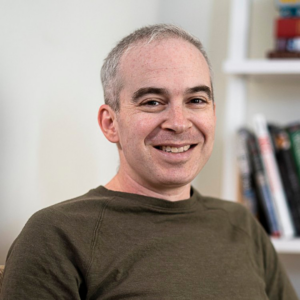
Adam Mazo (he/his) is the co-president and creative director for Upstander Project and an Emmy Award-winning social issue documentarian. Adam has (co)directed and/or produced all of Upstander Project’s films, including Bounty. His films have been broadcast on domestic and international television (Independent Lens), programmed at film festivals (Sundance, Hot Docs, Camden) and international conferences, and screened at universities and K-12 schools, where they are also often used in curricula.
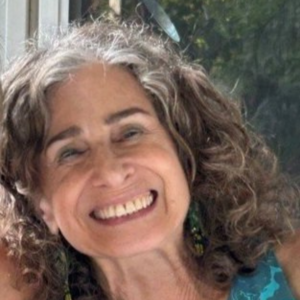
Mishy Lesser, Ed.D. (she/her) is the co-president and learning director for Upstander Project, co-director of the Upstander Academy, and an Emmy award-winning researcher. She is a Strassler Center for Holocaust and Genocide Studies Affiliate. She is a Circle Keeper and has been featured on WBUR (Boston) and PRI/BBC’s The World. Mishy was a Fulbright Scholar in Ecuador and spent 12 years learning and working in the Andes.

